Things I am learning on my summer garden to remember for next year...
babushka_cat
6 years ago
Featured Answer
Comments (28)
Related Discussions
10 things I've learned as a first year gardener
Comments (26)camp, I didn't realize it either until researching online and on gardenweb. "What are these cabbage lopers of which you speak?" (what the heck is a loper?) ... OHHHHHH, those gross lil green caterpillars I keep seeing. Gotcha! This has been fun to read everyone's input. There are too many gems to point them out individually, but I've learned that not only are garden bloggers really nice and helpful (per thyme2garden) but they are pretty funny, too! It's too bad I try to share the humor with my non-gardening friends and family ... (um, ok, everyone not on here!) and they give me the blank "I don't get it," stare. Such is life. I highly recommend the archived "so you want to grow a gardenia" thread... I read that a few months ago and was CRYING it was so funny. (I didn't even know what a gardenia WAS until that thread.) And it has given me the courage to venture into growing flowers this coming year ... once I make the lasagna beds this fall for spring ... and build a few more trellises ... and flip my compost ... and ask the restaurant down the street for coffee grounds ... and.. and.. and.. :P Oh, btw. The tomatoes are starting (in case anyone was troubled by my plethora of non-ripening tomatoes.) ... The gardening gods like me (at the moment ;) ). Thanks again everyone for sharing - Veronica...See MoreThings I am learning from working in a greenhouse
Comments (46)What a post! Would it bother you if I copied it and sent it to my greenhouse teacher? From working at a garden center: "What are these?" -"Fluffy seed pods from a Clematis" "No way, they never had them before!" -"Yep, that's what they are." "I want a SECOND opinion" -"Sure, hey ... do you happen to know what these are?" *Quizzical look at me* "Clematis seeds..." *Some more argument from customer on the subject* "Well, they're hideous." Yeah, that was an interesting one. It's not uncommon to have customers ask for a second opinion on an insect problem or something like that when they don't like the answer. I was really taken back by this one though. Many conversations begin with: "You know that tree in that yard by the church on ivelivedhereallmylifebutneverheardofit street? What is it?" You can never own too many pairs of Crocs. Keep pennies on hand for the kiddies to throw in the fountain. Harry Lauder's Walking Stick makes a wonderful conversation piece next to the cash register. When ordering petunias, if it doesn't say "wave" don't bother. People have no idea what they're exposure is like. -Use words like South and West, then ask them questions like, what time they eat dinner in the summer and where. If the answer is 5:30 on the back deck, ask them if they have to wear sunglasses or a sweater and go from there. If customers start a pile of plants next to the register, organize them by price. There is one customer every day that wants you to landscape their entire yard 10 minutes to closing. Know and accept this fact. Know plants in this order: -Vague description -Culture requirements and common name(s) -Deer resistance -Scientific names...See MoreNeed Help Preparing for My First Garden (Next Year)
Comments (4)I wrote this for someone else who asked a similar question, hope it helps you get a handle on how you think you should get started, depending on your circumstances... sorry if some of it doesn't apply, I didn't read it through again just now. If you've got more time than energy, like I do, smothering and lasagna is the easiest way to start a new garden bed for free, or almost. Sooo much easier than digging up grass. Just spread newspaper (about 10 sheets thick) or cardboard, overlapping well, until the area you want to be a bed is covered. Then cover the paper with 4-6" of finely shredded mulch and wait for the grass to die, usually 4-6 weeks but could be longer for some grasses. I've done this many, many times. My latest one is really ugly but I'm just trying to make lemonade out of lemons with this one... drought (probably aided by grubs) killed the grass here so I decided that would be the new sunny front bed I was considering. I did dig out a little spot that had hardly any grass and put some Cannas and Gladiolus there, a tiny baby maple tree, some Hibiscus cuttings which still just look stupid 'cuz they're "dead" sticks in the ground, then kind of working around it with smothering, and bark chips, which aren't my preference but I had them available. They don't stay in place if it ever rains really hard. Anyway, with this, I'm not planning to leave the bark chips there, they're just making sure the newspaper is held firmly to the contours of the ground to block the air and light from reaching the grass, which is what is needed to kill it. Whenever I can find more shredded hardwood, I'll replace the bark chips. Anyway, the newspaper decomposes and does not need to be removed later, just dig through it to add plants in the ground. I've also smothered grass with stuff that was handy, but does have to be removed to use the bed, like sheets of metal, old egg crate mattress topper, the bags of mulch that will cover the spot, whatever's handy. I think it's easier to wait for the grass to die than dig it up, and I don't mind if it has to get more ugly in the process of getting more pretty. One other benefit of smothering with a leave-in-place substance like paper or cardboard is that the weed seeds that may be in the ground are unable to germinate as they might be if you just dug up the grass and/or tilled. The lasagna comes into play if you add amendment layers to your smothering. For example, you could put the paper/cardboard, then kitchen scraps, ready to use compost, leaves, yard trimmings, whatever organic material (OM) that is handy, then the mulch (or not, if the other stuff is a thick enough layer to hold the paper in place and block the light.) It's not necessary to have lasagna layers when smothering, but when planting later, there's a huge improvement if a lot of OM was placed there. AND, while you're waiting, you can set potted plants there... I wrote this for someone complaining about clay, which you......See Morewill be needing a new W/D next year- am trying to learn now
Comments (13)ilmbg... I don't believe there is an steam only "Steam" cycle (on any washer). Wait...doing a quick search, LG may do a steam only and looks like they have an "Allergen" cycle. But be aware, some love their LG's and some hate them...(some have had bad service experiences). As far as I know, most "Steam" cycles uses hot water but shoot a shot of steam during the cycle. The Electorlux doesn't have steam in the washer but it does in the dryer. This is used for freshening clothes or releasing wrinkles (but you can also archive this effect if you throw in a damp towel into the dryer with some items that need a quick wrinkle release or freshening). The heat of the dryer will kill live dust mites, but will not get rid of accumulated allergens. For that you need to wash in hot water. Hot water also loosens and releases (with detergent) body oils which get trapped with in fibers and attract dirt and allergens. I don't think a 10 minute wash cycle would be possible. Most High Efficiency front load washers have longer wash times then any top loader though you can adjust the time somewhat. Keep in mind that there is the drain period and 2-3-4 rinses and a spin period in between those rinses. Front loaders just don't have one rinse but multiple ones and then you can even add an additional one. So far Electorlux holds the title for fastest wash time for the "Fast Wash" cycle of only 18 minutes. Most "Quick" washes are about 30 minutes (give or take)....See Morebabushka_cat
6 years agofbx22
6 years agolast modified: 6 years agoCC
6 years agofbx22
6 years agolast modified: 6 years agoCC
6 years agodefrost49
6 years agojacoblockcuff (z5b/6a CNTRL Missouri
6 years agobabushka_cat thanked jacoblockcuff (z5b/6a CNTRL Missouribabushka_cat
6 years agooscarmatic
6 years agoLoneJack Zn 6a, KC
6 years agokitasei
6 years agobabushka_cat
6 years agooscarmatic
6 years agokitasei
6 years agobabushka_cat
6 years agooscarmatic
6 years agobabushka_cat
6 years agobabushka_cat
6 years agobabushka_cat
6 years agoBobby A
6 years agodefrost49
6 years agolgtung
6 years ago
Related Stories
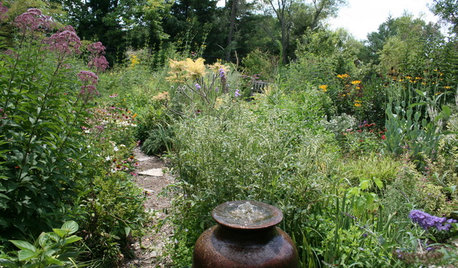
GARDENING GUIDESHow I Learned to Be an Imperfect Gardener
Letting go can lead to a deeper level of gardening and a richer relationship with the landscape. Here's how one nature lover did it
Full Story
FEEL-GOOD HOME12 Very Useful Things I've Learned From Designers
These simple ideas can make life at home more efficient and enjoyable
Full Story
ORGANIZING10 Things to Remember While Decluttering in the New Year
Fast-track the process and ease the stress by making a plan before you begin
Full Story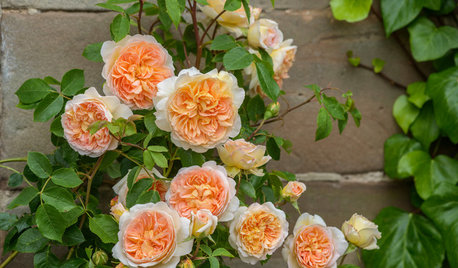
FLOWERSSneak a Peek at Some of Next Year’s Irresistible New Roses
Here are top 2018 picks for beautiful blooms, lovely fragrances and exceptional disease resistance
Full Story
FUN HOUZZEverything I Need to Know About Decorating I Learned from Downton Abbey
Mind your manors with these 10 decorating tips from the PBS series, returning on January 5
Full Story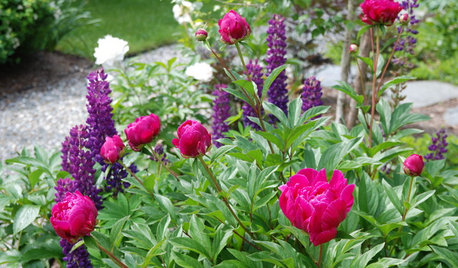
REGIONAL GARDEN GUIDESDelight in Summer’s Garden Glories — Here’s What to Do in June
Wherever you live in the United States, these guides can help you make the most of your summer garden
Full Story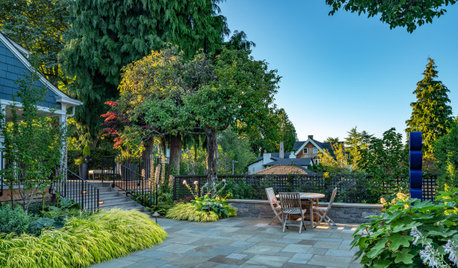
LANDSCAPE DESIGNLearn Your Garden’s Microclimates for a Resilient Landscape
Reduce your water demand and learn the basis of planting the right plant in the right place
Full Story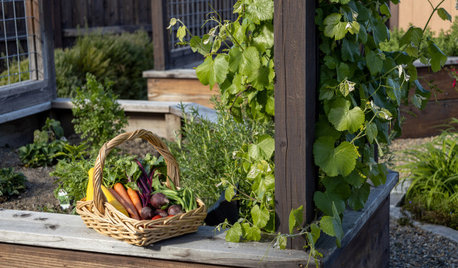
GARDENING 101What to Do in Your Edible Garden After the Summer Harvest
Set up your veggie garden to be productive and healthy year after year with this fall checklist
Full Story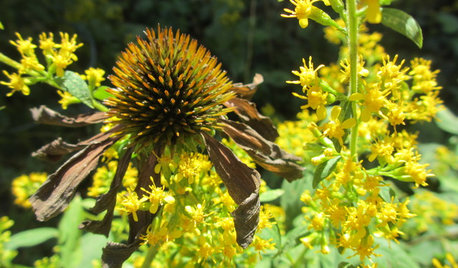
FALL GARDENINGReflecting on a Gardening Year
Mistakes and successes, surprises and comforts. The garden helps us grow in new ways every year
Full Story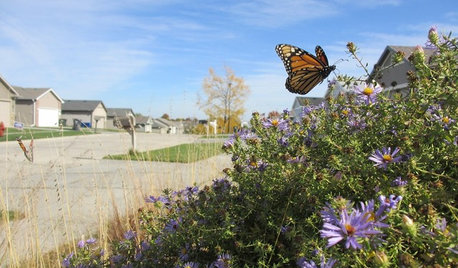
LIFEReflections From a Year in the Native Garden
A Nebraska gardener contemplates more flowers, more spiders, less work and the magic of slowing down
Full Story



Chris (6a NY)